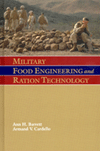TECH FLASH
Long live Salmonella
A University of Georgia study found the harmful bacteria can survive in sandwich crackers and cookies for months.

Food safety is increasingly highlighted as a priority for the food industry, so it won’t ease manufacturers’ concerns to learn a team of researchers at the University of Georgia (UGA) found pathogens like Salmonella can survive for at least six months in cookies and crackers. Yikes! Researchers say the recent study was prompted by an increased number of outbreaks of foodborne diseases linked to low-water-activity (dry) foods.
“There have been an increased number of outbreaks of diseases associated with consumption of contaminated dry foods. We wouldn’t expect Salmonella to grow in foods that have a very dry environment,” says Larry Beuchat, UGA professor emeritus and leader of the study.
According to the study, although low-water activity fillings in cookie and cracker sandwiches have not been considered as likely vehicles of foodborne pathogens, an outbreak of Salmonellosis associated with a marshmallow confectionery and other instances have proven Salmonella can survive for eight months or more in fondant, halva and dried fruits, raising interest in learning more about its survival in high-sugar products.
Foodborne illness rates have trended down in recent years, though Salmonella infection rates have remained steady. Each year, CDC estimates Salmonella causes 1 million foodborne illnesses in the United States, 19,000 hospitalizations and 380 deaths. Beuchat and study co-author David Mann, a research professional in the Center for Food Safety on the UGA campus, not only discovered these bacteria survive in dry foods, they live lengthy lives.
For the recent study, published in the Journal of Food Protection, researchers used five different serotypes of Salmonella that had been isolated from foods involved in previous foodborne outbreaks. “The isolates were from foods with very low moisture content,” Beuchat explains.Cookies, crackers and high-sugar fillings (chocolate and vanilla), along with peanut butter- and cheese-based fillings, were obtained from commercial sources. Cookies containing fillings dry- or wet-inoculated with Salmonella at high and low levels were stored at 25°C for one and six days and for three, five, 10, 16 and 26 weeks. In the chocolate crème and peanut butter crème cookie sandwiches, Salmonella at initial populations of 3.4 and 3.6 log CFU/g survived for at least 26 weeks; at 0.38 log CFU/g, the pathogen survived for five and 10 weeks, respectively. In cracker sandwiches containing peanut butter- and cheese-based fillings, Salmonella at initial populations of 2.9 and 3.4 log CFU/g survived for 26 and 16 weeks, respectively; at 0.53 log CFU/g, it survived in cracker sandwiches containing peanut butter-based and cheese-based fillings for six days and five weeks, respectively. Inactivation was more rapid in wet-inoculated peanut butter crème filling than in dry-inoculated filling but unaffected by the type of inoculum in peanut butter-based filling.
In some cases, the pathogen was able to survive for at least six months in the sandwiches. Because of this finding, researchers are offering some suggestions for preventing contamination and outbreaks involving these products.
“First, all the ingredients used in these foods should be tested,” Beuchat says. “If there is a possibility foodborne pathogens are present in specific ingredients, the next step would be to stop using these ingredients.”
The study, “Survival of Salmonella in Cookie and Cracker Sandwiches Containing Inoculated, Low-Water Activity Fillings,” can be found online here.
Looking for a reprint of this article?
From high-res PDFs to custom plaques, order your copy today!







